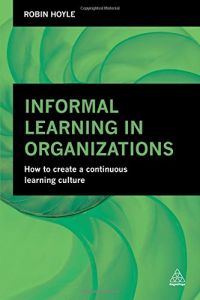Join getAbstract to access the summary!

Join getAbstract to access the summary!
Robin Hoyle
Informal Learning in Organizations
How to Create a Continuous Learning Culture
Kogan Page, 2015
What's inside?
Most development within organizations occurs through informal learning.
Recommendation
Seasoned learning and development (L&D) professional Robin Hoyle explains why organizations need to manage informal learning and how they can do it well. Planning and management apply to purposeful undertakings – for example, classroom instruction – but informal learning is ad hoc and unrestrained. The solution lies working with the inherent contradiction between unscripted improvisational learning and the degree of structure a company needs to organize its employees and to track what they know and what they’re learning. getAbstract recommends Hoyle’s guidance and his program to L&D professionals.
Summary
About the Author
Robin Hoyle is a training and development professional. His company, Learnworks, creates blended learning programs for global organizations.



















Comment on this summary